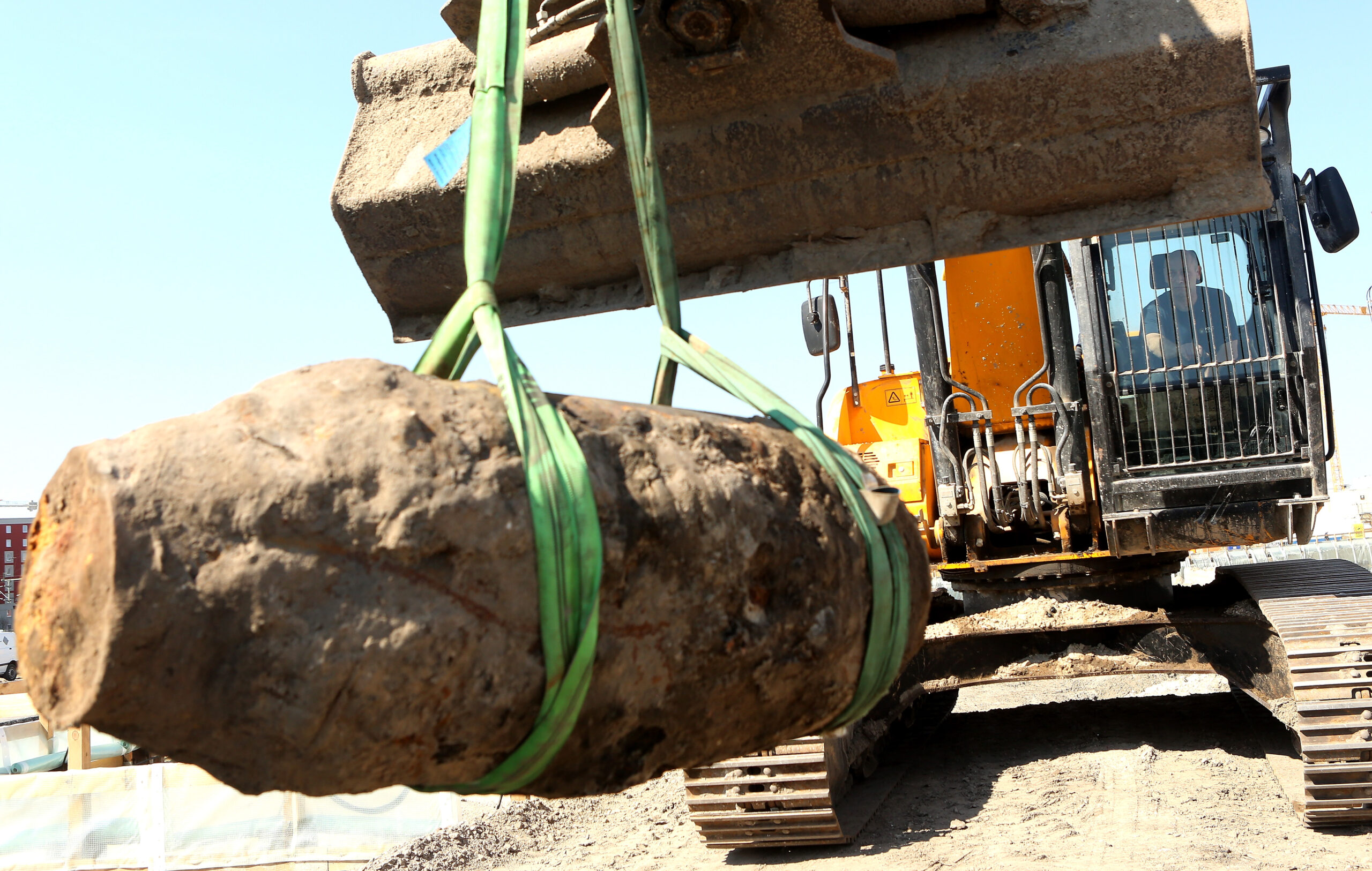

Aging, unexploded ordnance from the Second World War are becoming more sensitive to impact as the years pass. That’s because one of the explosives inside them is becoming more sensitive with age than previously thought, creating a greater risk of unexpected detonation of these bombs whether they are, storage facilities or uncovered near homes.
That’s according to a new study, “Increased impact sensitivity in ageing high explosives; analysis of Amatol extracted from explosive remnants of war,” published in Royal Society Open Science at the end of March. The focus was on Amatol, an explosive heavily but not universally used in munitions throughout both World War I and II. Done over three years, the study looked at samples of Amatol from live explosives made prior to the end of World War II.
The researchers looked at five different samples taken from unexploded World War II German bombs, testing them by dropping weights to see if they would explode. Each sample was found to be more sensitive than Amatol was previously thought, with one sample being four times more sensitive.
“[A]s the explosives deteriorate over time, often resulting from inferior storage conditions or the presence of undesired factors such as moisture and certain metals, the munitions may become increasingly sensitive to external stimuli and susceptible to accidental detonation,” the study says.
Subscribe to Task & Purpose Today. Get the latest military news and culture in your inbox daily.
It’s not fully clear why explosives featuring Amatol are becoming more at risk of detonating. Previous studies found the substance to be no more sensitive than TNT. However, contamination of Amatol with moisture or salt can increase sensitivity, something that might be happening as munition casings deteriorate over time themselves.
Decades after both World War I and II, people are still discovering leftover and unexploded ordnance from the wars. In February, a World War II bomb was found in a garden in the British city of Plymouth, prompting a large evacuation. This past week a 500-kilogram bomb from the war was found in the Germany city of Cologne. A large part of the city was closed off while authorities defused the explosive. Even military bases are at risk; in December 2022, workers at an American base in Germany were hospitalized after their equipment caused a phosphorus bomb to leak.
In most cases these unexploded munitions are safely removed after being found, but their discovery prompts evacuations. Crews have to be careful to make sure the explosives are carefully handled to protect themselves and communities around where the bombs are discovered. The new study shows that those efforts might become more challenging as more time passes.
The many unexploded bombs leftover from the World Wars continue to pose dangers in other ways. In July 2022, wildfires in Slovenia set off World War I-era bombs still in the ground, exploding near firefighting crews trying to contain the blazes.
It’s unclear how many of the millions of tonnes of unexploded ordnance out there contain Amatol and therefore are becoming more sensitive and dangerous. Geir Petter Novik, one of the authors of the study, told New Scientist that the results will change how he and his team at the Norwegian Defence Research Establishment will handle unexploded munitions going forward.
The study’s authors also note that as munition casings deteriorate along with the chemicals inside them, there is a risk of the unexploded bombs contaminating water and food chains.
The latest on Task & Purpose
- Air Force special operators must take class before getting shaving waivers
- Camp Pendleton Marines encouraged to fix their own barracks rooms
- 101st Airborne soldiers are first to receive new Next Gen Squad Weapon
- Air Force fires commander of Holloman maintenance group
- Army investigating Nazi imagery on Special Forces patch posted online